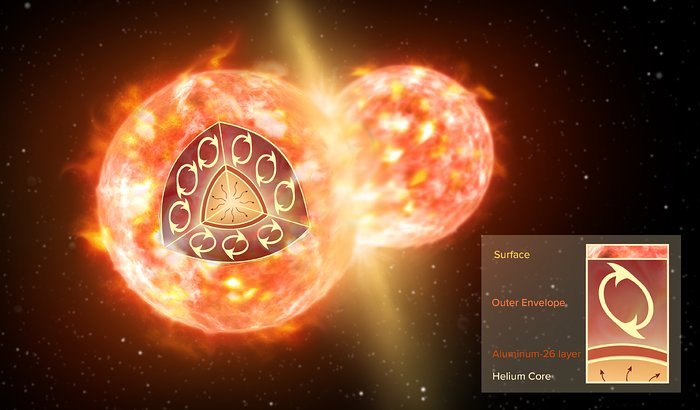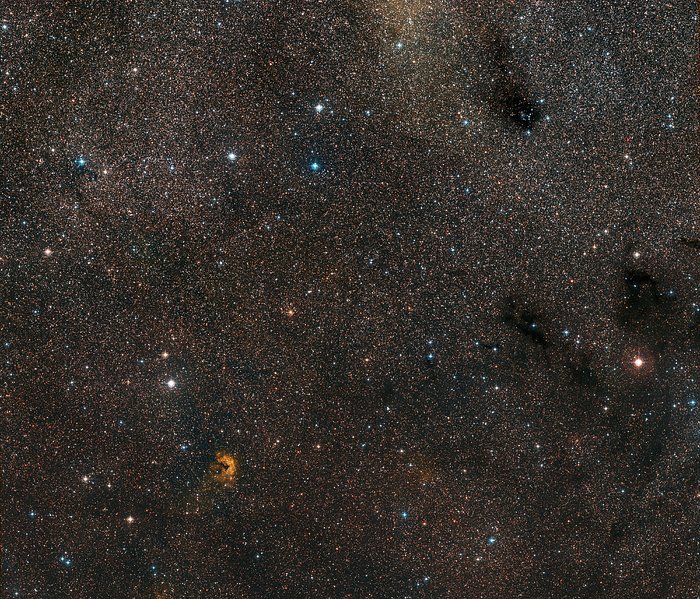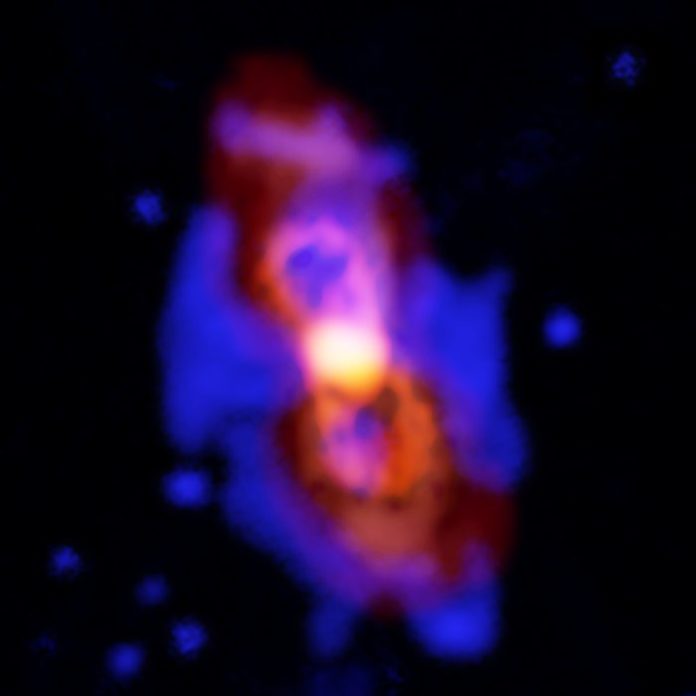A team of astronomers at ESO using ALMA and NOEMA for the first time have discovered a radioactive molecule in interstellar space. The radioactive molecule is nothing but an isotope of aluminum.
Using the Atacama Large Millimeter/submillimeter Array (ALMA) and the Northern Extended Millimeter Array (NOEMA), scientists were able to detect this source of aluminum-26. According to scientists, this isotope was scattered into space after the collision of two stars, that left behind a leftover known as CK Vulpeculae.
The source, known as CK Vulpeculae, was first observed in 1670 and at the time it appeared to eyewitnesses as a splendid, red “new star”. Despite the fact that at first visible with the naked eye, it immediately blurred and now requires powerful telescopes to see the remaining parts of this merger, a diminish focal star encompassed by a radiance of glowing material streaming far from it.

After 348 years from then, astronomers observed the event now the remaining parts of this explosive stellar merger have prompted the reasonable and persuading mark regarding a radioactive version of aluminum, known as aluminum-26. This is the first initial radioactive molecule authoritatively recognized outside of the Solar System.
Astronomers detected the unique spectral signature of molecules made up of aluminum-26 and fluorine (26AlF) in the debris surrounding CK Vulpeculae, which is about 2000 light-years from Earth. As these particles turn and tumble through space, they transmit a particular unique finger impression of millimeter-wavelength light, a process known as rotational transition. Astronomers considered it as ‘gold standard’ for detection of molecules.
According to astronomers, this observation could help them gain better insights on how CK Vulpeculae formed.

Tomasz Kamiński, the team leader said, “This first observation of this isotope in a star-like object is also important in the broader context of galactic chemical evolution. It also demonstrates that the deep, dense, inner layers of a star, where heavy elements and radioactive isotopes are forged, can be churned up and cast into space by stellar collisions.”
“We are, in addition, observing the guts of a star torn apart three centuries ago by a collision.”
Along with this, the observation revealed that aluminum-26 will rot to wind up more steady and in this procedure, one of the protons in the nucleus decays into a neutron. Amid this procedure, the energized core discharges a photon with high vitality, which we see as a gamma ray.
Previously, detection of gamma-ray emission have shown that around two solar masses of aluminum-26 are present across the Milky Way, but the process that created the radioactive atoms was unknown. With these new measurements, astronomers have definitively detected for the first time an unstable radioisotope in a molecule outside of our Solar System.
Although, the group has inferred that the generation of aluminum-26 by objects like CK Vulpeculae is probably not going to be the significant source of aluminum-26 in the Milky Way. The mass of aluminum-26 in CK Vulpeculae is approximately a fourth of the mass of Pluto, and given that these occasions are so uncommon, it is profoundly far-fetched that they are the sole makers of the isotope in the Milky Way galaxy.
The research is published in the journal Nature Astronomy.
